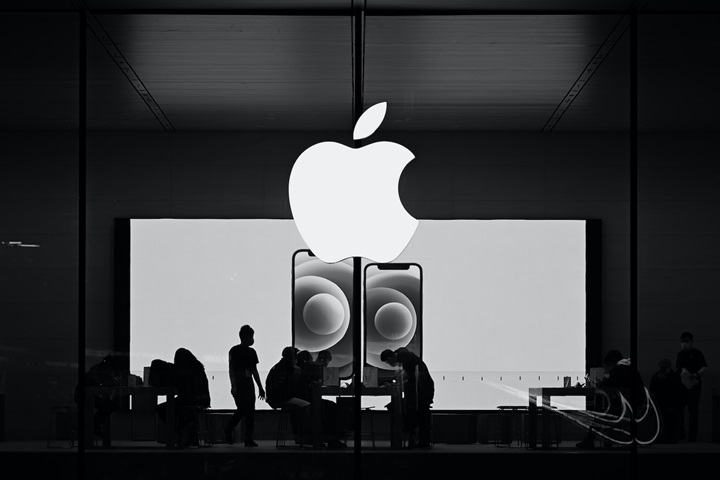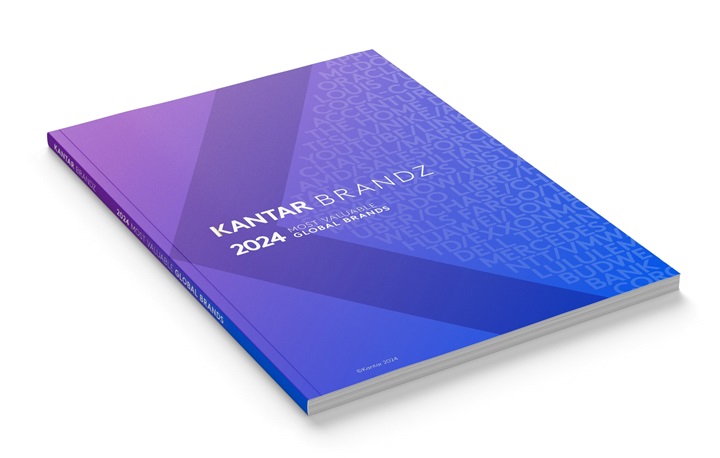The role of marketing has gone through a number of eras, starting with the broadcasting of the superiority of products, to engaging with customers’ emotional needs, to identifying with customers on a personal, meaningful level.
Up until the last era, marketing communications has largely been unidirectional, and the marketing function has existed in its own silo, alongside other business functions. Similarly, customer experience, though it has a long history, has traditionally focused on the operational aspects of addressing customer issues, and has been largely separated from other business functions.
This has all changed in the current era. As the digital ecosystem has transferred the power of the relationship over to customers, communication has become disintermediated, and customers no longer tolerate their expectations not being met. With this shift, customer experience has become fundamental to brand equity and relationships. Leading businesses have recognised this shift and the need for a more customer-centric organisational structure. For example, in 2021, McDonald’s appointed its first Chief Customer officer to oversee all aspects of the business that touch the customer journey, including marketing. Similarly, Walmart’s CMO reports into the Chief Customer Officer, in order to align brand and customer experience.
But often, businesses still treat the topics of brand and customer experience separately. As a result, the responsibilities for each are situated in different parts of the organisation. This two-track approach is becoming increasingly obsolete.
Instead, businesses should aim to bring brand and experience together at an organisational level – a combination that can spur numerous positive effects for both brand reputation and financial success. Ultimately, the goal should be to align your entire organisation more closely to the way that consumers themselves evaluate brands.
Kantar research shows that brands derive only 25% of their equity from communications, such as paid media. The remaining 75% comes from the experiences that customers have with the brand – its products, services, and customer service channels, including digital.
Put simply: while advertising and other media are vital to maintaining a brand’s salience, its strength is primarily built through the experiences of its customers. Brands build equity when they deliver experiences that address the functional and emotional needs of their consumers.
But that alone is no longer enough. To build brands that out-perform competitors, it is necessary for brands to have a degree of meaningful difference. This entails purposefully designing experiences that reflect the essence of the brand and creating meaningful, brand-reinforcing memories – in other words, meaningfully different branded experiences.
At Kantar, we look at the impact of differentiated customer experience on a brand to understand the gaps that exist between brand perceptions and customer experience – revealing how aligned the brand experience is to the brand promise.
Rising brand trust goes hand in hand with higher brand equity. Over time, customers decide for or against a brand based on how well it fulfils its brand promise as carried through experiences. When brands deliver on their promises, it creates the foundation for trust. From there, providing additional, consistently positive experiences can further build that trust.
Indeed, ‘consistency’ is a key component of both brand and experience. As the Nobel Prize-winning economist Daniel Kahneman once put it, ‘We actually don’t choose between experiences, we choose between memories of experiences.’ And memories, for their part, are built through experiences that have an emotional impact, feel unified and are distinctive.
When brands are trusted to consistently deliver on their promises, and provide meaningfully different experiences, they feel more authentic.
For brands, achieving this kind of authenticity is always a worthy goal – but it’s even more important during times of economic crisis, where less disposable income means more considered (and less risky) spending by consumers.
But more closely connecting customer experience to your brand identity will also supercharge growth in areas like brand power and pricing power. Where customers feel an emotional bond between their needs, expectations, and experiences, they are more likely to remain loyal, as a brand ‘feels’ right to them.
For both brand and CX success, then, brands should aim to create a strong emotive identity rooted in what makes them meaningfully different. Identify what makes you stand out from the crowd, and then communicate it – and execute on it – each and every day.
Success in this endeavour will not come overnight. It will require consistently tracking brand and CX metrics across all customer journeys and interactions to see how well your newly aligned organisation is functioning. With time and vigilance, however, brands can close the gap between brand values and customer interactions – and ultimately increase customer preference and choice.
As more of life has moved online, both brand building and customer experience have suffered in some respects. But ultimately, standout brands draw their strength from the recognition that brand equity and the customer experience are as important in the digital realm as they are in the brick and mortar – and furthermore, that brand and experience work best when they’re built in tandem.
Ask yourself, if you’re offering your customers experiences that:
1) Are relevant and meaningful, and thus speak to emotional needs and connect with consumers?
2) Are innovative and different so that they meet functional needs in a way unlike other brands?
3) Are consistent across all journeys and touchpoints so that they create lasting memories?
The Kantar BrandZ Most Valuable Global Brands 2023 report, including analysis on the world’s most valuable brands, is available now at www.kantar.com/campaigns/brandz/global
For an overarching view of a brand’s performance, Kantar has launched a new, free interactive tool using BrandZ’s wealth of data. BrandSnapshot powered by BrandZ delivers intelligence on 10,000 brands in more than 40 markets, offering a quick read on a brand’s performance in a category.
Up until the last era, marketing communications has largely been unidirectional, and the marketing function has existed in its own silo, alongside other business functions. Similarly, customer experience, though it has a long history, has traditionally focused on the operational aspects of addressing customer issues, and has been largely separated from other business functions.
This has all changed in the current era. As the digital ecosystem has transferred the power of the relationship over to customers, communication has become disintermediated, and customers no longer tolerate their expectations not being met. With this shift, customer experience has become fundamental to brand equity and relationships. Leading businesses have recognised this shift and the need for a more customer-centric organisational structure. For example, in 2021, McDonald’s appointed its first Chief Customer officer to oversee all aspects of the business that touch the customer journey, including marketing. Similarly, Walmart’s CMO reports into the Chief Customer Officer, in order to align brand and customer experience.
But often, businesses still treat the topics of brand and customer experience separately. As a result, the responsibilities for each are situated in different parts of the organisation. This two-track approach is becoming increasingly obsolete.
Instead, businesses should aim to bring brand and experience together at an organisational level – a combination that can spur numerous positive effects for both brand reputation and financial success. Ultimately, the goal should be to align your entire organisation more closely to the way that consumers themselves evaluate brands.
Kantar research shows that brands derive only 25% of their equity from communications, such as paid media. The remaining 75% comes from the experiences that customers have with the brand – its products, services, and customer service channels, including digital.
Put simply: while advertising and other media are vital to maintaining a brand’s salience, its strength is primarily built through the experiences of its customers. Brands build equity when they deliver experiences that address the functional and emotional needs of their consumers.
But that alone is no longer enough. To build brands that out-perform competitors, it is necessary for brands to have a degree of meaningful difference. This entails purposefully designing experiences that reflect the essence of the brand and creating meaningful, brand-reinforcing memories – in other words, meaningfully different branded experiences.
Knowing where you stand
Providing standout experiences is easier said than done, of course. But the process starts with gaining a rock-solid understanding of your brand’s positioning – and measuring how well this aligns with current customer perceptions around experience.At Kantar, we look at the impact of differentiated customer experience on a brand to understand the gaps that exist between brand perceptions and customer experience – revealing how aligned the brand experience is to the brand promise.
Rising brand trust goes hand in hand with higher brand equity. Over time, customers decide for or against a brand based on how well it fulfils its brand promise as carried through experiences. When brands deliver on their promises, it creates the foundation for trust. From there, providing additional, consistently positive experiences can further build that trust.
Indeed, ‘consistency’ is a key component of both brand and experience. As the Nobel Prize-winning economist Daniel Kahneman once put it, ‘We actually don’t choose between experiences, we choose between memories of experiences.’ And memories, for their part, are built through experiences that have an emotional impact, feel unified and are distinctive.
When brands are trusted to consistently deliver on their promises, and provide meaningfully different experiences, they feel more authentic.
For brands, achieving this kind of authenticity is always a worthy goal – but it’s even more important during times of economic crisis, where less disposable income means more considered (and less risky) spending by consumers.
Putting it together
Clearly articulating what is different about your brand and using that as a framework for all elements of your CX, will enable you to create more memorable and distinctive experiences. More distinctive experiences will, in turn, lead to positive commercial outcomes like churn reduction or increased share of wallet – in the way that well-thought-out customer experiences always do.But more closely connecting customer experience to your brand identity will also supercharge growth in areas like brand power and pricing power. Where customers feel an emotional bond between their needs, expectations, and experiences, they are more likely to remain loyal, as a brand ‘feels’ right to them.
For both brand and CX success, then, brands should aim to create a strong emotive identity rooted in what makes them meaningfully different. Identify what makes you stand out from the crowd, and then communicate it – and execute on it – each and every day.
Success in this endeavour will not come overnight. It will require consistently tracking brand and CX metrics across all customer journeys and interactions to see how well your newly aligned organisation is functioning. With time and vigilance, however, brands can close the gap between brand values and customer interactions – and ultimately increase customer preference and choice.
As more of life has moved online, both brand building and customer experience have suffered in some respects. But ultimately, standout brands draw their strength from the recognition that brand equity and the customer experience are as important in the digital realm as they are in the brick and mortar – and furthermore, that brand and experience work best when they’re built in tandem.
Ask yourself, if you’re offering your customers experiences that:
1) Are relevant and meaningful, and thus speak to emotional needs and connect with consumers?
2) Are innovative and different so that they meet functional needs in a way unlike other brands?
3) Are consistent across all journeys and touchpoints so that they create lasting memories?
The Kantar BrandZ Most Valuable Global Brands 2023 report, including analysis on the world’s most valuable brands, is available now at www.kantar.com/campaigns/brandz/global
For an overarching view of a brand’s performance, Kantar has launched a new, free interactive tool using BrandZ’s wealth of data. BrandSnapshot powered by BrandZ delivers intelligence on 10,000 brands in more than 40 markets, offering a quick read on a brand’s performance in a category.






